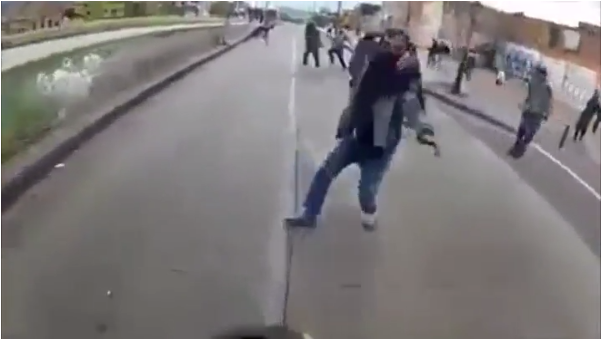Essential Motocross Gear List
What you should be kitting yourself out with

MOTOCROSS gear isn’t just cool to look at, it keeps you safe. Your kit bag will be bursting at the seams. But, motocross gear isn’t exactly cheap, so you’ll want to make sure you’re buying the right stuff.
So, I know what you’re thinking.
What gear do I need for motocross riding and racing? Here’s our list of essential kit, originally published by Noob Norm and the Beginner’s Guide To Motocross.
1. Helmet
It goes without saying if you don't have a helmet, you don't ride. Arguably, a helmet will be your most crucial bit of protection when you crash (which you will, and if you don’t, you’re not the adrenaline junkie you thought you were) – so don’t mess around here.
Don’t buy cheap helmets from brands that are not quality tested.
In the UK, you’ll want a motocross helmet that has an ACU Gold Stamp.
In the USA, you’ll want a motocross helmet that has a DOT, Snell M2005, Snell M2010 or ECE R22-05 marking.
No brand worth their own bodyweight will sell a helmet without a well-known safety marking.
If you’re unfamiliar with the best motocross helmet brands, some of the top brands include: 6D, Answer, Arai, Bell, Fly Racing, Fox Racing, HJC, MSR, O’Neal, Shift, Shoei, Thor and Troy Lee Designs.
I’d suggest sticking to those.
2. Boots
The best motocross boots on the market will:
- Absorb impacts when you land from jumps
- Protect you from roost (the dirt and rocks being thrown from the rear wheel of other bikes)
- Protect your feet from the sharp teeth on the foot pegs
- Stop you twisting or breaking your ankles
There’s no doubt the most renowned brand worldwide for motocross boots is Alpinestars. I’ve had everything from their Tech 6 to the Tech 8 and Tech 10, and they’ve all been great boots.
However, the best motocross boots I’ve ever owned were a pair of SIDI Crossfires; the hinged ankle offered lots of flexibility, but they were lightweight and extremely supportive.
A couple of brands worth noting (asides from Alpinestars and SIDI) include: Answer, Axo, Fly Racing, Forma, Fox Racing, Gaerne, O’Neal, TCX and Thor.
3. Goggles
Without a decent set of motocross goggles, you’re going to struggle to see. Whether it’s wind, rain, dust, rocks or mud; you need to protect your eyes.
There are 3 types of motocross goggles:
Tear-off Motocross Goggles
A tab is located on either side of the goggle lens, allowing you to place around 21 clear pieces of film onto the goggles. Then as vision is impaired by dust or dirt, rip one off at a time.
Be warned though, it’s pretty easy to rip the whole stack off at once; pretty annoying when you’re 30 seconds into a 30-minute moto!
Roll-Off Motocross Goggles
Roll-off motocross goggles are orientated towards riding in the mud and rain. Being from the UK, I’ve had the chance to use them – a lot!
There are two canisters, one either side of the goggles.
One has a fresh film in it, and when you pull the cord on the side of the canister, it drags the new film across to replace the dirty film, which then is placed in the backup canister.
Unobstructed vision, with just two quick pulls of a cord.
Rip And Roll Motocross Goggles
Rip and roll motocross goggles combine a roll-off and tear-off system. They are not cheap, and they are quite hard to source.
In the UK there is a brand called Rip ‘N Roll, whereas in the USA, there’s the Forecast Advanced Mud Tear Off/ Roll Off System which comes from the goggle brand '100%'. It’s a lens replacement that fits any 100% motocross goggles.
4. Motocross Gear Combo (Pants, Jersey & Gloves)
Your motocross kit will come in a matching combo. A durable jersey and pant combo will offer some protection in a crash, and the best motocross gloves will stop you from getting horrendous blisters.
I always take a couple of sets in case there is a wet moto – there’s nothing worse than putting on wet gear for your 2nd or 3rd race of the day.
I’ve owned motocross gear combos from brands including Answer, Shift, Thor, Alpinestars, Fox Racing, MSR and Troy Lee Designs and have been more than happy with all of them.
5. Chest Protector
When reading product descriptions, it’s worth noting that a roost deflector is different to a chest protector.
A roost protector will shield you from rocks and dirt flung up by other motocross bikes.
A chest protector will guard you from roost, but will also protect you in the event of the crash. If safety is your thing, then go with a chest protector (that’s what I use). Most motocross riders prefer to go with a roost protector – they are lighter and offer a snug fit, so offer a little more flexibility.
I’ve got a UFO Shockwave and a EVS chest protector. The EVS provides a much better fit.
6. Knee Pads & Elbow Pads
Like the chest protector example, I know a lot of riders that choose not to wear elbow pads (I prefer to wear them).
Arm pump is a massive thing in motocross, and elbow pads certainly don’t help. The straps can restrict blood flow.
On the knee pad front – I don’t know any rider that doesn’t wear some type of knee protector or knee brace.
7. Gear Bag
Now you’ve got all your gear, you’ll need a cool bag to lug it all round in.
I use a OGIO motocross kit bag. Although they’re a high-profile brand, I picked up my bag for under $80, and I’ve had it for over 5 years.
For more Visordown moto content click here.
A thanks to Noob Norm and The Beginner's Guide to Motocross.

